Discover the splendid isolation of Portland, Victoria

On 10 May 1861, Portlanders of distinction gathered at the Tasmanian Hotel to insist that a colony, to be called Princeland, be established as a separate state to Victoria and South Australia.
When the border between South Australia and Victoria (then part of NSW) was established in 1834, the only people who knew about and travelled within the interior of the region were First Nations clans.
So, the new border, drawn in the Colonial Office for the 1834 Act of Parliament by which South Australia was established, was created in the absence of European knowledge of that part of Australia.
This increasingly became a matter of indignation to Portland’s growing settler population, and by the 1860s the succession movement flourished.
Princeland was to have five ports — Robe, Port Macdonnell, Portland, Port Fairy and Warrnambool — and extend north as far as the Murray River. It would be about the same size as Tasmania.
Members of the Separation League in the isolated southwest wanted to self-govern, far from what they termed the ‘money-pit’ state capitals of Adelaide (537km northwest) and Melbourne (350km east), from which they argued Portland, tucked away in Victoria’s southwest corner, received very little.
There are untold fascinating stories about Portland, which was founded almost a year before Melbourne.
None more so than the Gunditjmara, the Traditional Owners of much of southwest Victoria, who lived around this beautiful region for more than 37,000 years.
Budj Bim
 Budj Bim Cultural Landscape (Image Budj Bim)
Budj Bim Cultural Landscape (Image Budj Bim)
One of Australia’s most significant historic sites, the Budj Bim Cultural Landscape, lies 40km north of Portland.
Budj Bim is home to one of the world’s oldest aquaculture systems and the stone foundations of around 200 dwellings are evidence of a large, settled community dating back more than 6600 years.
At Budj Bim, Gunditjmara people used volcanic rock to construct a complex system of fish traps, weirs and ponds to manage water flows from nearby Lake Condah more than a thousand years before Stonehenge and the Pyramids of Giza were raised.
Visitors to the region can tour the UNESCO World Heritage-listed Budj Bim site on a cultural tour that has made the list of the National Geographic Travel’s Best of the World.
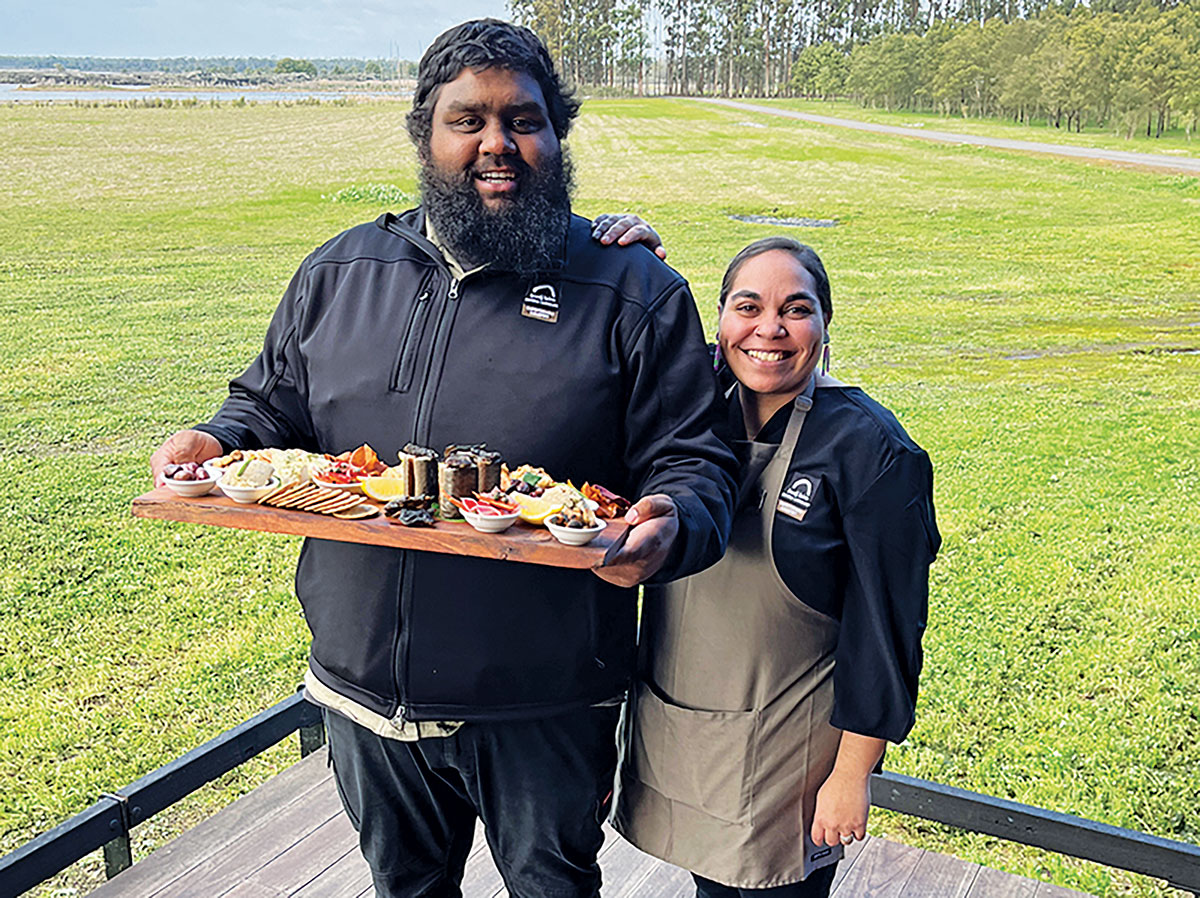 Braydon Saunders and Marley Morgan with bush tucker (Image Budj Bim)
Braydon Saunders and Marley Morgan with bush tucker (Image Budj Bim)
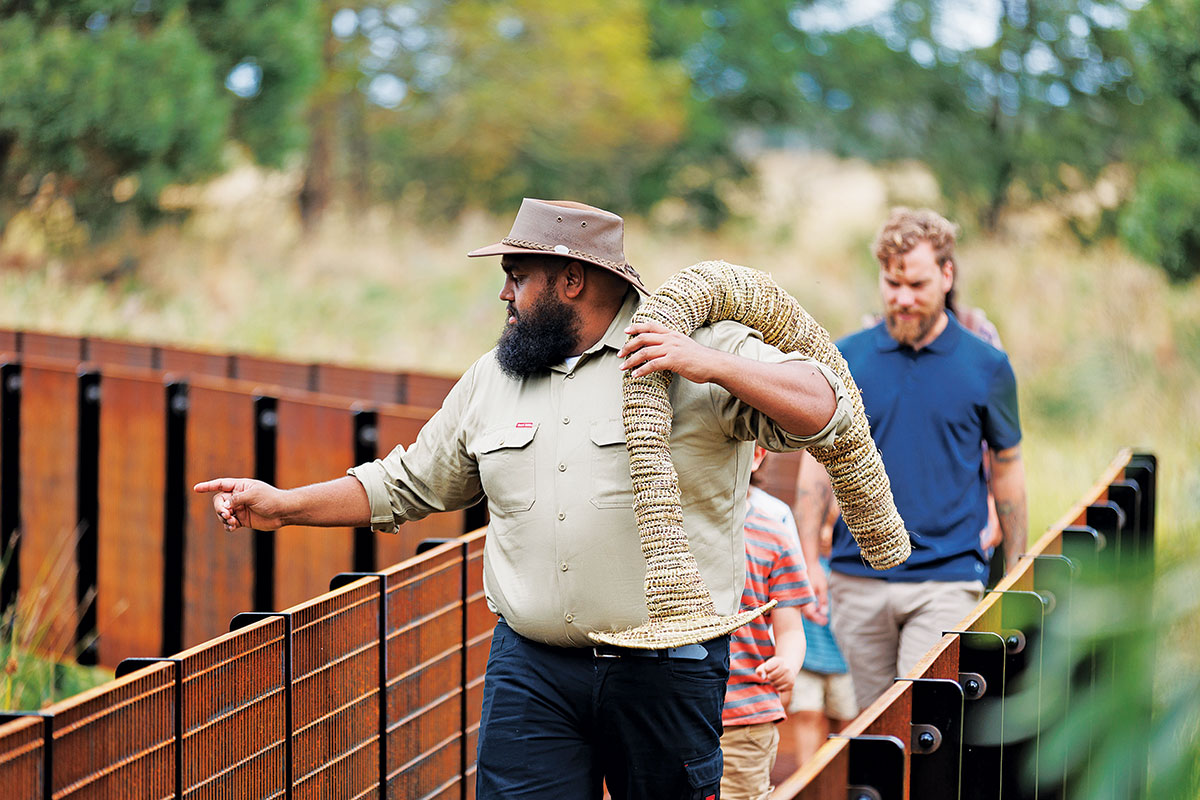 Guide Braydon with an eel basket (Image Budj Bim
Guide Braydon with an eel basket (Image Budj Bim
While some historians believe sealers were visiting Portland Bay as early as 1798, more permanent European settlement began when a whaling station was established at the site that would become Portland in 1829.
Many claim that William Dutton, a whaler who built a shack here that year, founded Portland. But because it’s said Dutton at first visited intermittently, it is Edward Henty, who arrived from Tasmania with livestock and supplies to establish a settlement here in 1834, who has claimed the founder’s prize for the past 189 years.
Old yarns abound about the frontier settlement — for example, in 1841 the region’s first police magistrate, James Blair, appointed a ‘scourger’ (a person who whips someone), installed stocks for unruly citizens, and built himself a mansion called Government House.
While today Portland is known for its industries — the Port of Portland specialises in agricultural, forestry and mining products, hence the huge container ships you see in the bay — the town is also a seaside beauty.
The very remoteness that caused the Separation League to flourish in the 1860s, and its failure after petitioning Queen Victoria herself for Princeland to be established — she refused — has left Victoria’s first settlement one of the most attractive seaside towns in the state.
Far from the suburban sprawl of major cities and super development of many coastal towns close to major centres, Portland and the local area remains a place of uncluttered beaches, tranquil bays, quiet backroads and historic buildings, with more than 200 listed by the National Trust — making it the perfect place for history buffs and nature lovers alike.
This interesting city includes the Steam Packet Inn, which dates from 1842; the circa 1845 bluestone courthouse situated high on a hill above the bay that is still in use, and equally imposing Customs House next door (1849), also still in use.
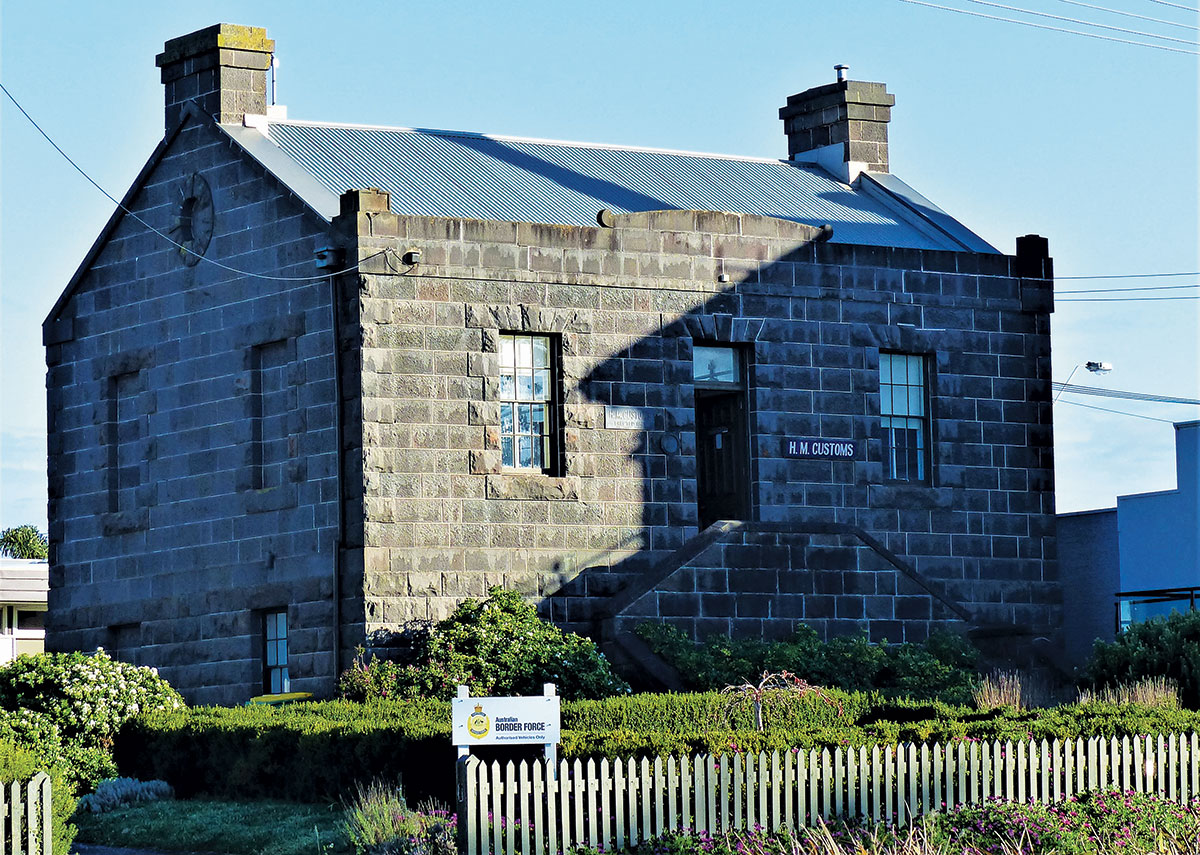
Dotted around Portland’s old streets are the one-time homes of ship’s captains, merchants and churchmen dating from the 1840s.
In 1844 Portland boasted 12 inns. The oldest include The Commercial, now the Gordon Hotel, where the licence dates back to 1842, making it one of Victoria’s longest continually licensed pubs,
Another of Portland’s treasures, the Botanic Gardens was established from the early 1850s and today features more than 300 varieties of roses and a croquet lawn that dates from 1868.
Even a saint loved Portland
Among the impressive buildings of Portland, few are grander than Bayview College, which has sweeping views of Portland Bay. Part of the college includes what was once known as Bayview House, built by Stephen Henty, which was leased by Mary MacKillop for her family.
Miss MacKillop, as she was then known, lived in Portland from 1862 to 1866, the longest she lived anywhere. Pre-sainthood, she lost her teaching job at the Portland Common School, moved to Penola, took holy orders, and the rest is religious history.
Today an Aussie Camino departs Portland for the 10–day, 160km walk to Penola, where Saint Mary MacKillop, canonised in 2010 and Australia’s only saint, founded the Sisters of Saint Joseph.
Shipwrecks and lighthouses
The ocean along southwest Victoria is littered with shipwrecks: almost 700 cargo and passenger ships came to grief in the treacherous Southern Sea along this rugged coast.
Some 19 shipwrecks alone occurred in Portland Bay — before the construction of breakwaters and deepwater moorings, the bay was a trap for vessels at anchor as strong southeasterly gales sometimes drove them ashore.
These vessels carried immigrants and anything from timber, vegetables, clothing and alcohol to pianos.
Darren Hudson, one of many enthusiastic volunteers at Portland’s History House, located in the former bluestone town hall, said that every second person who visits is seeking information about ancestors who arrived in Portland.
History House carries old photographs, newspapers, resources for tracing family history, and has a small museum.
“Thirty-seven ships carrying assisted migrants arrived in Portland between 1851 and 1857, each carrying at several hundred passengers — so there are a lot of people searching for their forebears,” said Darren.
Cape Nelson Lighthouse

Gordon Stokes remembers the strongest winds he ever encountered at Cape Nelson Lighthouse, 11kms south of Portland.
As hurricane-force winds of 120km/h ripped across the cliffs, Gordon gripped a rail outside the lighthouse. “The wind was so strong my body was horizontal, floating in the air, held up by the wind,” said Gordon.
Victoria’s southwest coast has some of the most dramatic, wild and incredibly beautiful coastline in Australia.
Because of the number of tragic shipwrecks along the coast in the 1800s, the Victorian Government had a lifesaving beacon constructed, and Cape Nelson Lighthouse has towered 50 metres above the raging ocean since 1884 and is still in operation today.
Gordon, a lifetime Portlander — his ancestor, an indentured labourer, arrived in Portland Bay in 1852 — runs daily tours of the lighthouse, delivering a fascinating commentary about the beacon, built from more than 2000 tonnes of stone quarried near Cape Bridgewater.
Lighthouses are full of intrigue, and the yarns are many. There’s the time of the ‘Russian Scare’ in 1885, when a huge telescope was installed at the lighthouse so keepers could watch out for the ‘red peril’. Or the time a keeper, inebriated at a Portland pub, rode on his horse backwards all the way back to Cape Nelson.
Whale watching
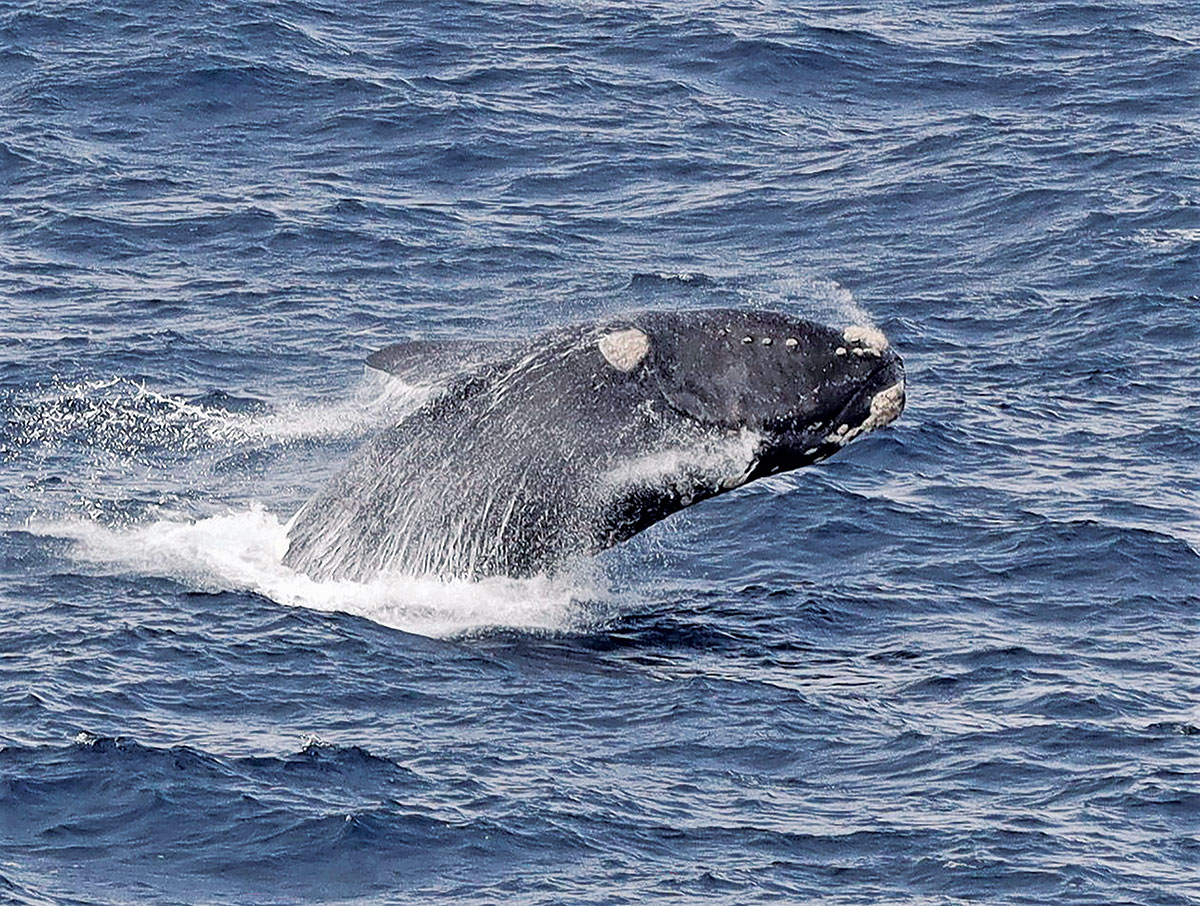 Winter is peak whale watching season (Image Allen McCauley)
Winter is peak whale watching season (Image Allen McCauley)
Whale watching in and around Portland is at its peak during the winter period, when southern right whales, humpbacks and the occasional orca are seen regularly at Cape Nelson, Cape Bridgewater and Portland Bay.
“We just had a run of humpbacks come through, about 20 in one week,” said Allen McCauley, a local photographer who has lived in Portland for more than 30 years. “Sometimes they come right into the breakwater in Portland Bay, you could almost touch them.”
The best time of year to spot blue whales is between November and May, with Cape Nelson and the blowholes at Cape Bridgewater ideal locations to view these majestic creatures while also taking in the spectacular views.
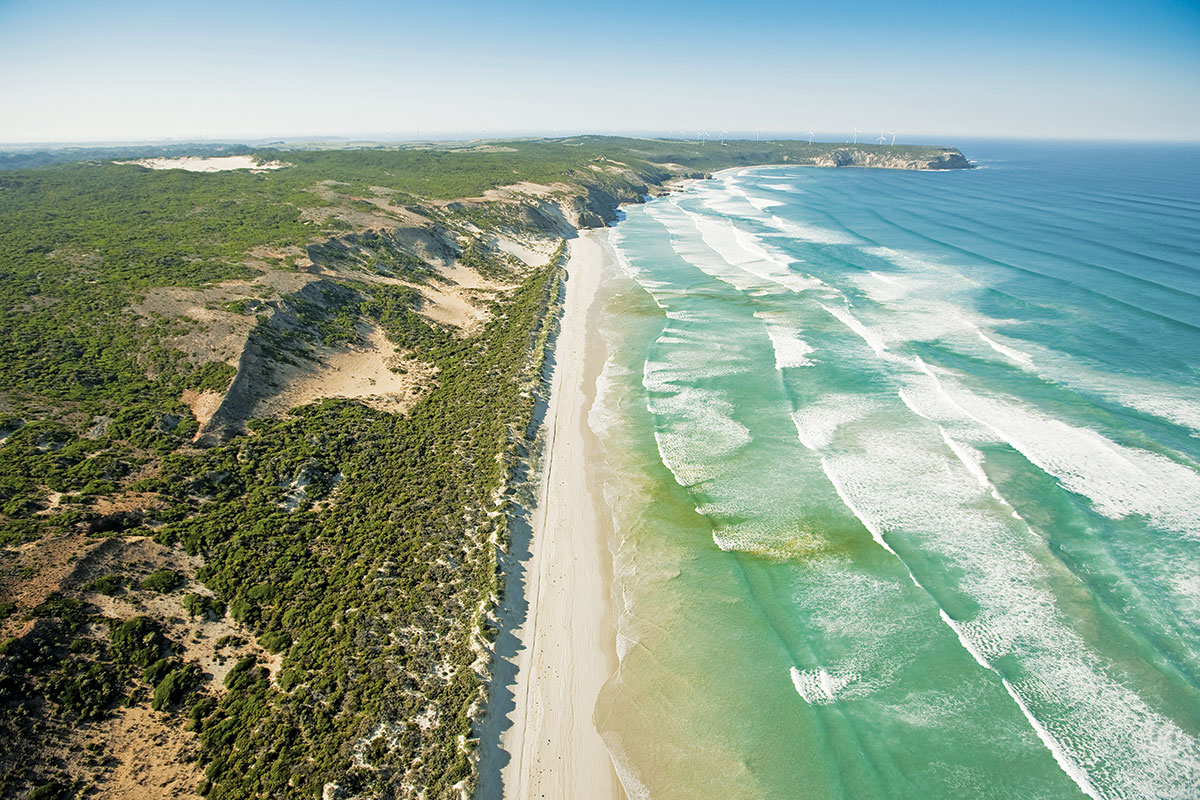
When not photographing whales, Allen and fellow nature-lovers may be photographing tuna jumping out of the water, and peregrine falcons riding the winds off the Cape Nelson cliffs. Or, during the darkest nights from May to August, spectacular — and elusive — Aurora Australis, when the sky can be lit with brilliant hues of pink, green and purple.
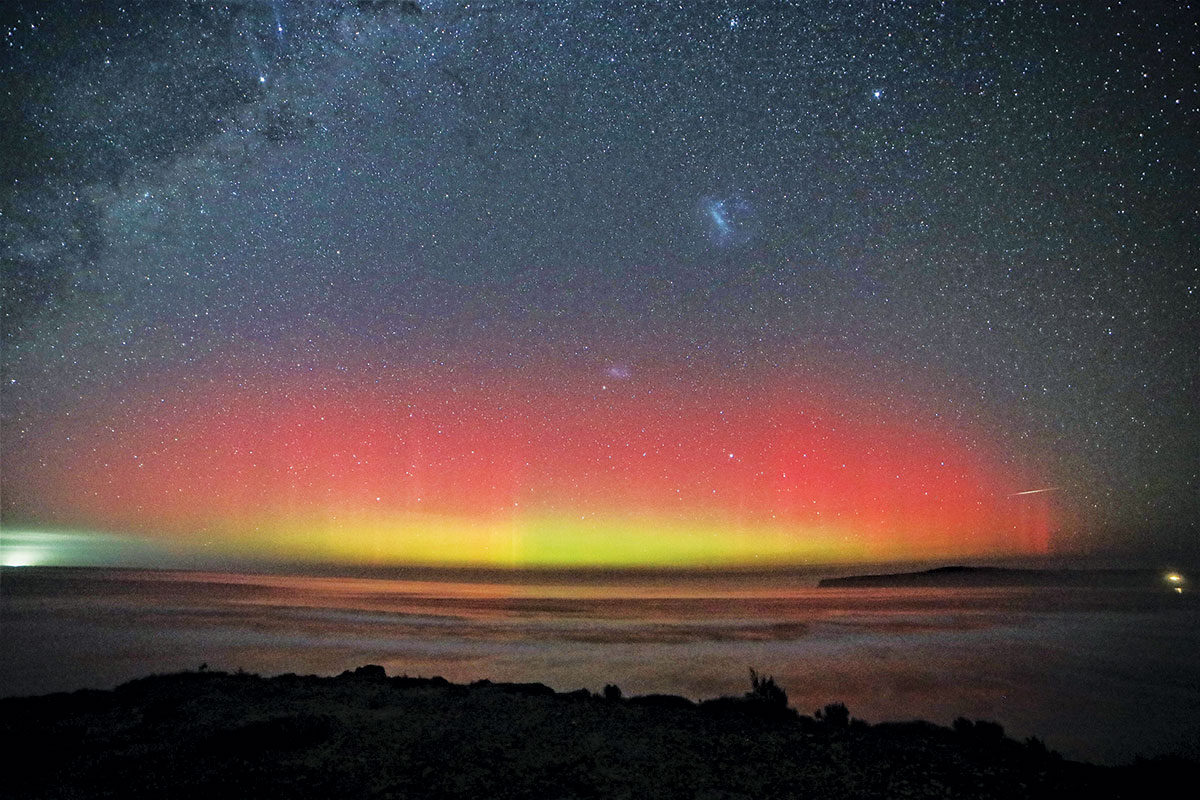 Aurora Australis (Image Allen McCauley)
Aurora Australis (Image Allen McCauley)
“More and more people are visiting Portland’s spectacular coast as they learn of the prolific number of whales in this area, which is not as widely known as some other whale hotspots, and the sheer beauty of this pristine environment,” said Allen.
The freshest fish

Portland’s fishing fleet lands up to 40 per cent of Victoria’s catch, most of which sadly leaves town almost immediately for metropolitan markets.
But in good news for visitors, Portland Seafood at Trawler Wharf sells the freshest fish straight from the trawlers, from ling, King George whiting, flathead, dory, shark and snapper to southern rock lobster.
There’s not much that owner Shannon Churchill doesn’t know about lobster; he has been catching them here for more than 25-years. Shannon and his wife Haley are both born and bred Portlanders, descended from generations of fisherfolk, and the author can testify that the fish they sell is sublime.
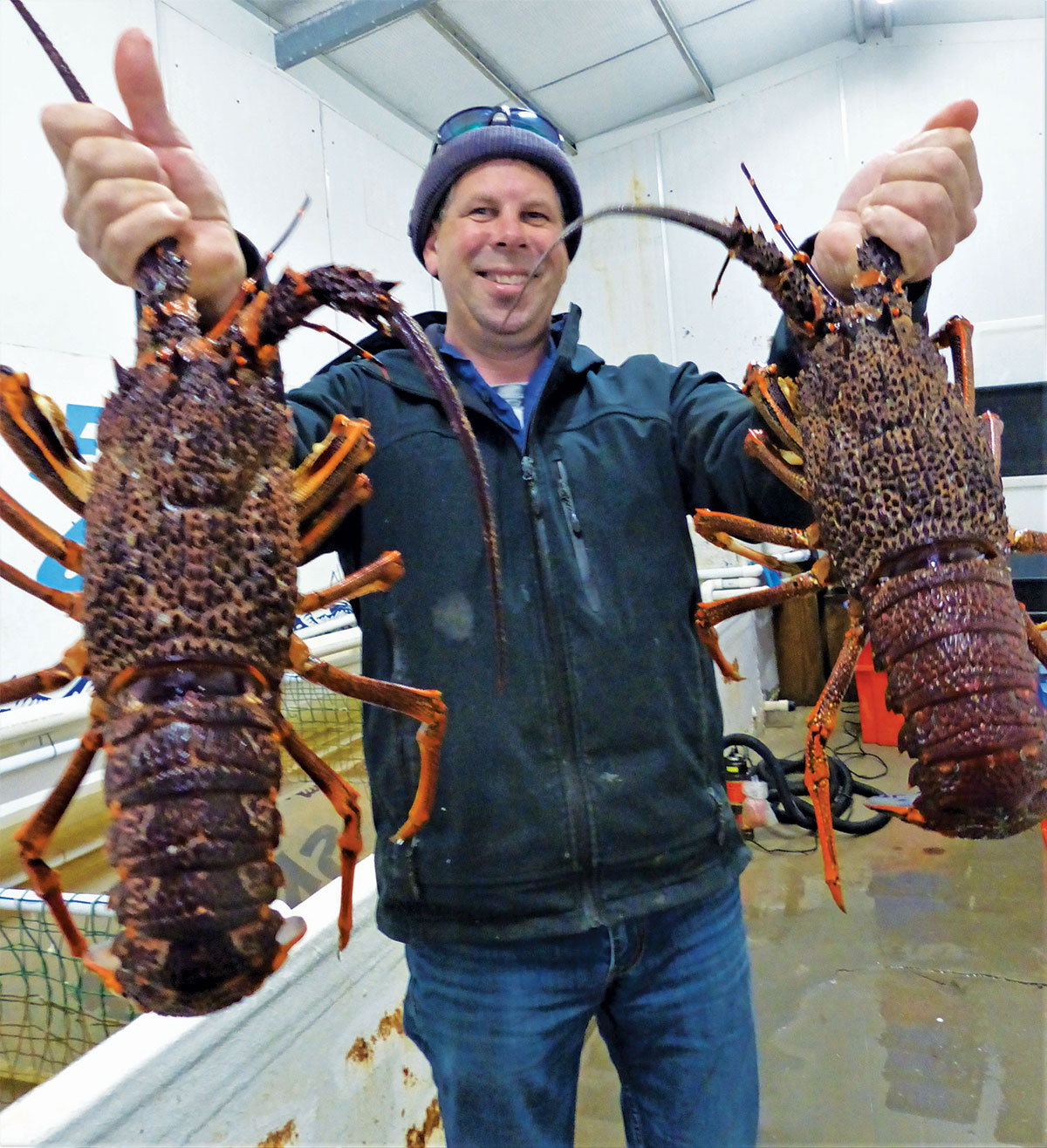 Shannon Churchill rom Portland Seafoods with the day's catch
Shannon Churchill rom Portland Seafoods with the day's catch
Around Portland
Victoria’s southwest region is a place of incredible natural beauty, its diverse landscapes including anything from fantastic beaches and towering cliffs of basalt and limestone to slowly flowing rivers.
Birdlife in this remote region includes brolga, lapwing, spoonbill cormorant and moorhen — so if you enjoy bird watching be sure to bring your binoculars along. The area's prolific wildlife includes koala, wallaby, wombat, kangaroo, potoroo, echidna and rare spotted-tailed quoll.
From Portland it’s 22km west past rolling farmlands to Bridgewater Bay Beach, a glorious four-kilometre-long arc of golden sands that is practically deserted for most of the year save for lucky locals. Aside from a smattering of houses and the ocean-facing Sea View Lodge, there’s the Bridgewater Bay Cafe, where the coffee is good and so are the hamburgers.
At Cape Bridgewater on the western side of the bay is Stony Hill, towering 130m above sea level and the highest clifftop on Victoria’s coastline. The surreal landscape here is the rim of an ancient volcano crater.
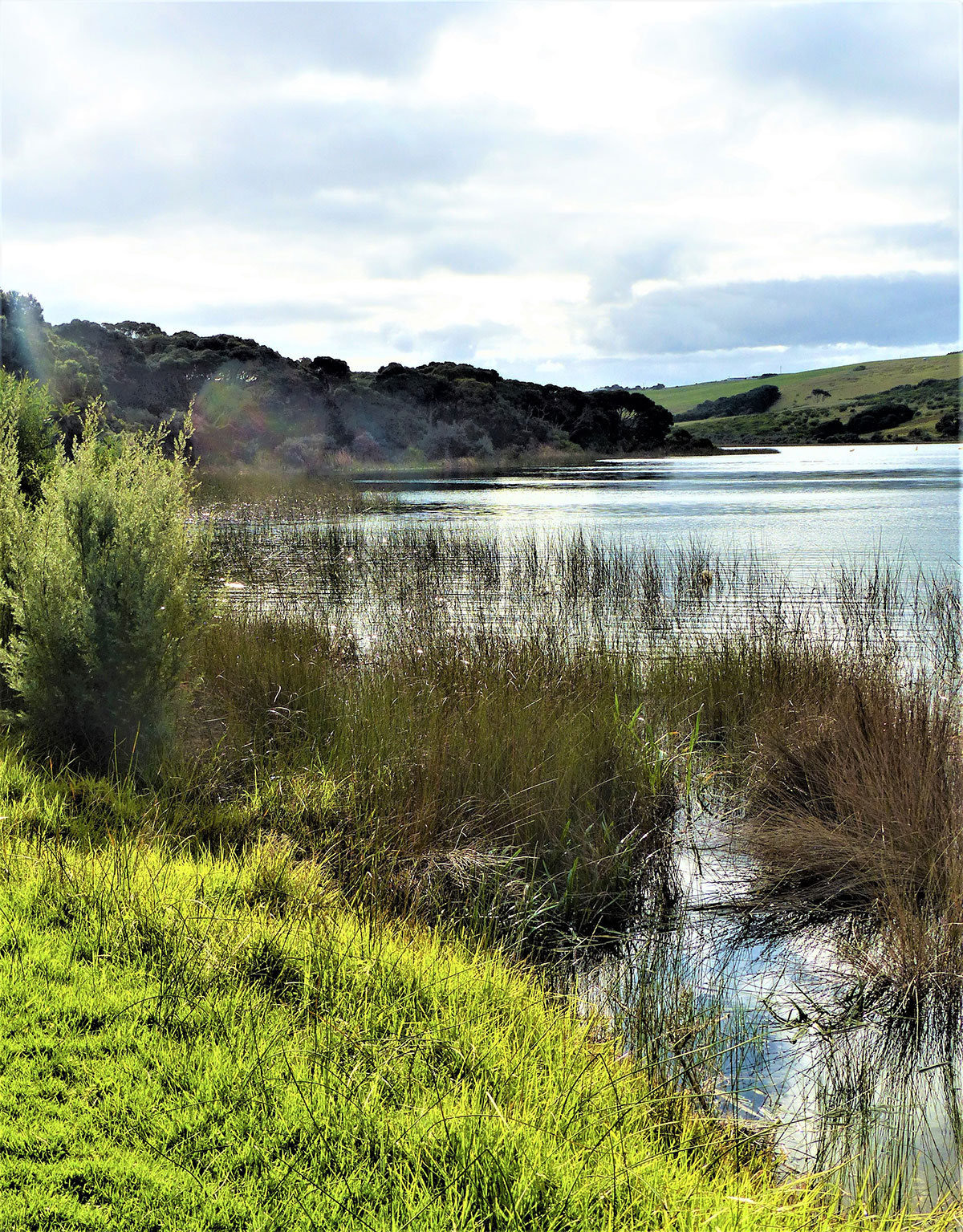
Cape Bridgewater is part of the 8500-hectare Discovery Bay Coastal Park, a spectacular combination of sweeping beaches, huge sand dunes, placid lakes, and bay after bay of jutting promontories that extends 65km westwards to Nelson, a mere four kilometres from the South Australian border.
Heading back towards Portland, Bridgewater Lakes is popular for fishing and canoeing, and is a great place for a picnic if it's windy at the beach.
Opposite the entrance to the lakes are the Tarragal caves, a network of limestone caves reached by a steep climb, and once an important Gunditjmara camping place, where shell middens and earth ovens have been dated to more than 11,000 years old.
Things to do
Budj Bim tours
Explore the ancient Budj Bim Cultural landscape through Gunditjmara eyes with Budj Bim Tours, which includes two-hour, half day and full day tours. The Tae Rak bush tucker cafe serves local dishes prepared using traditional Aboriginal techniques and flavours. Tours from $89 per person, more at budjbim.com.au
Cape Nelson Lighthouse tours
Cape Nelson Lighthouse tours held daily at 11am and 2pm, $15 adults, $10 children, families $40, to book phone Gordon on 0438 012 352.
Great Southwest Walk
The Great South West Walk has been developed as a bushwalking trail suitable for most ages and abilities comprising short two-hour loop walks, full-day walks or, for the hardy, the entire 250km loop ex Portland. Find out more about these walking trails at greatsouthwestwalk.com
Portland Maritime Discovery and Visitors’ Centre
Situated on Portland’s foreshore, the Portland Maritime Discovery and Visitors’ Centre has displays about local maritime history, shipwrecks and marine life. The centre has an email service (sign up at whalemail.com.au) broadcasting alerts for each whale sighting, more at portland.com.au
Family Research
History House, Cliff St, Portland, is open daily 10am–noon and 1pm–4pm (closed Tuesdays). Museum entrance is adults $3, concession $2.
Fishing Charters
Portland is one of the world’s most consistent tuna fishing locations. Anglers also catch salmon, King George whiting, snapper, mulloway, trevally, garfish and kingfish in the pristine waters. A range of fishing charters operate out of Portland Bay, information available at visitportland.com.au
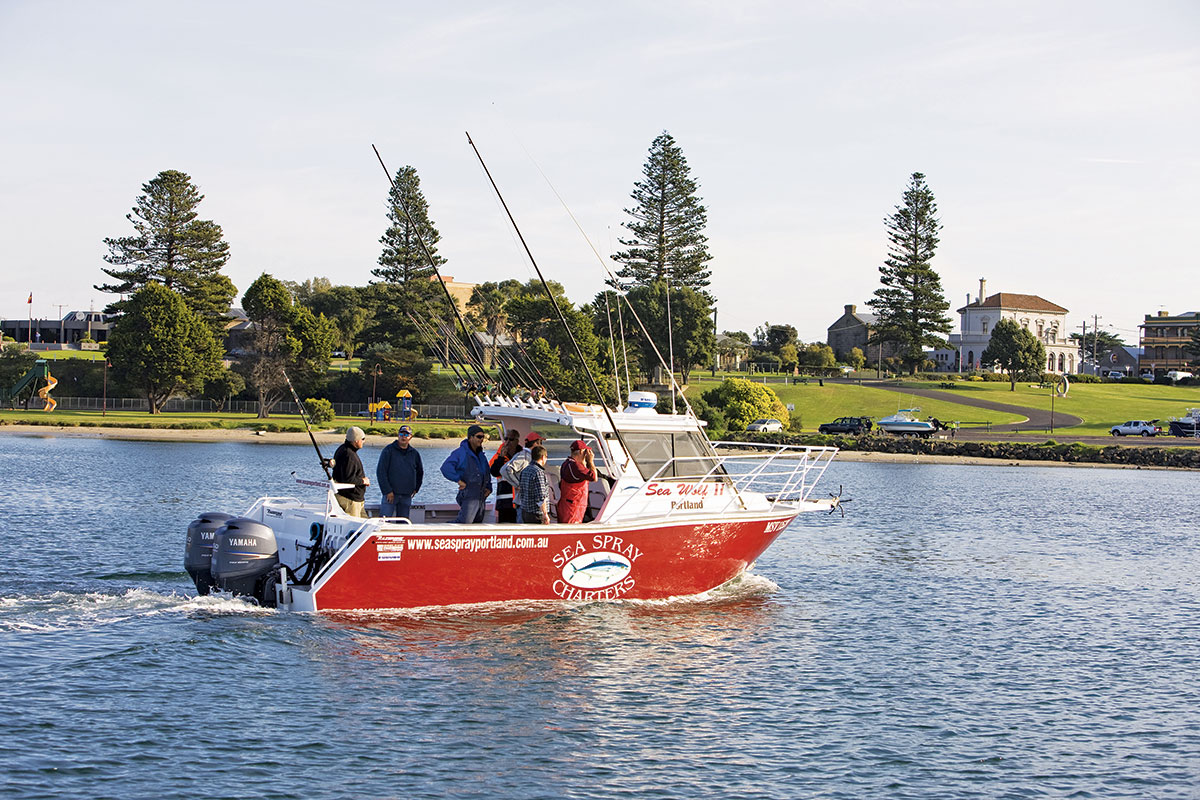 A Portland fishing charter (Image Tourism Victoria)
A Portland fishing charter (Image Tourism Victoria)
Where to stay
If you're looking for a caravan park or campground, Portland has no shortage. Here are some of the best places to set up your base camp to explore the Portland area, including the nearby Henty wine region.
NRMA Portland Bay Holiday Park overlooks Portland Bay. Features powered ensuite sites from $47 per night; powered sites from $30. Facilities include camp kitchen, children’s playground, TV room and on-site shop.
Portland Tourist Park is set on five hectares of bushland that is home to an abundance of native birds and wildlife, including resident koalas. Playground, jumping pillow, camp kitchen. Powered ensuite sites from $42 per night, powered sites from $35.
Portland Holiday Village has powered sites from $38 per night. Right in town, close to shops and supermarket. Features playground and camp kitchen.
Budj Bim National Park, co-managed by Gunditjmara Traditional Owners and Parks Victoria, has a tranquil crater lake and bushland surrounds. The park’s campground has 22 unpowered campsites of varying sizes, some suitable for small caravans and camper-trailers. From $25.30 per night.
Free camping
Free camping at Portland’s Henty Park Campground at the Cable Tram Station, 2B Henty St, Portland, for self-contained caravans and RVs. Grassed sites, water, toilets, dump point and bins. Henty Park Campground is a 72-hour stay and is pet friendly.
Sawpit Free Campground, 242 Boyers Rd, Narrawong, 19km northeast of Portland is situated within Mount Clay State Forest. Six sites, composting toilets, wood barbecues.
See more free camping, and all about visiting Portland, at visitportland.com.au
If you’re travelling without the van:
Cape Nelson Lighthouse has accommodation in beautifully restored former lighthouse keepers’ cottages from $242 per double per night.
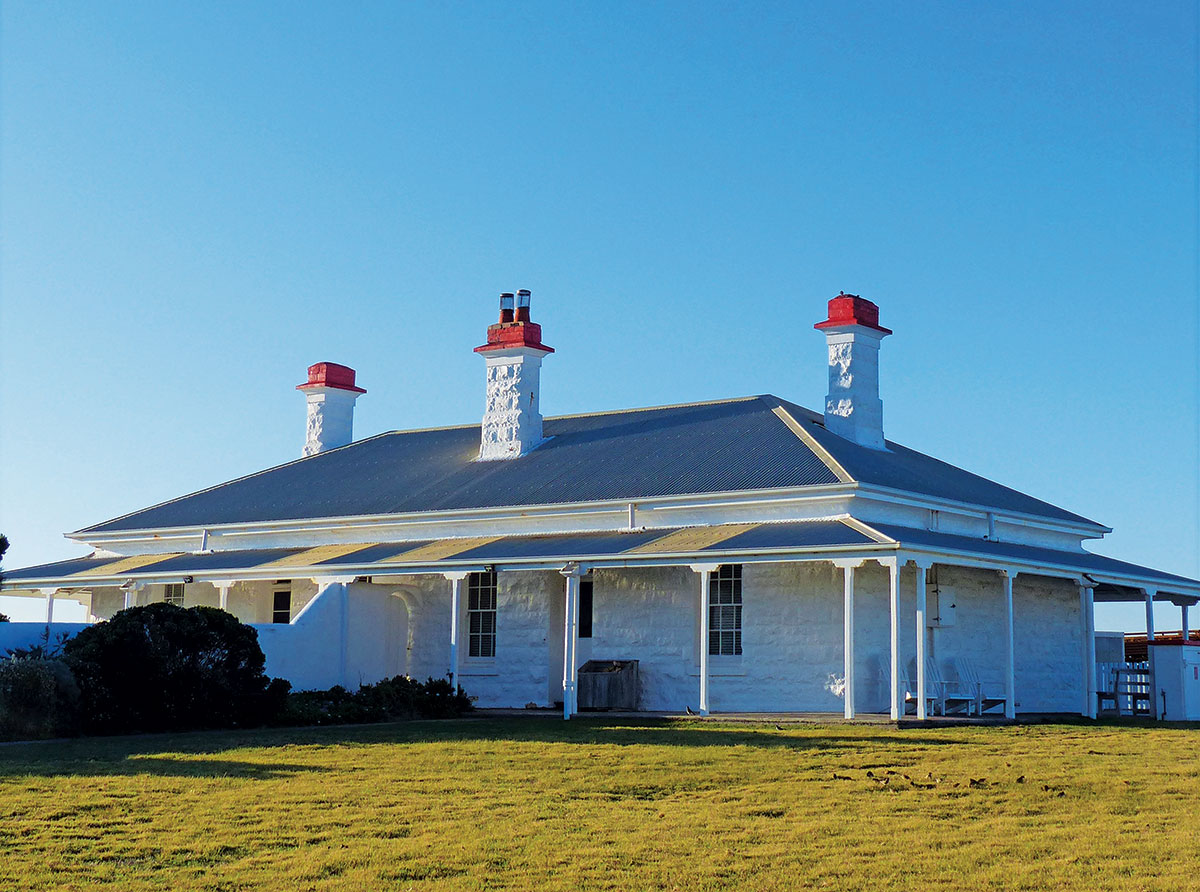
THE NEXT STEP
Are you ready to experience the freedom of the open road? Don't wait - Find your dream getaway now!







